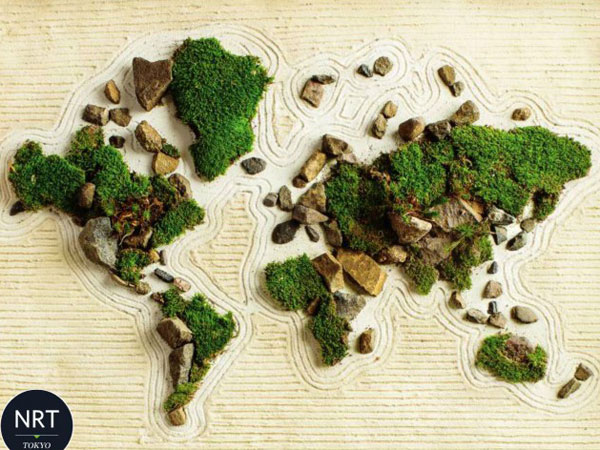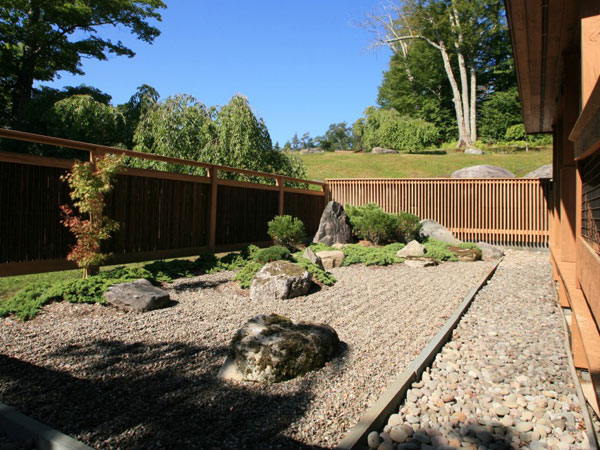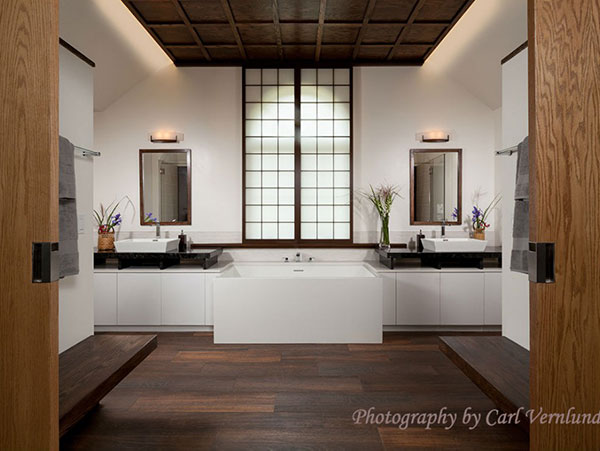[videojs_video url=”https://pedarch.com/wp-content/uploads/2019/07/PED-Blog-Post-2-1.mp4″ poster=”https://pedarch.com/wp-content/uploads/2019/08/Post2.jpg”]
Yugen: appreciating the unknown
Japan is a country made up of islands. Surrounded by the ocean, its climate is humid and constantly changing. Along the coast, high mountains are often covered in mist and fog. In part, familiarity with these transforming, obscured landscapes–as seen in this scroll from the Edo period–is what creates the Japanese appreciation for Yugen.
Yugen, the art of the untold and unknown, is a foundational Japanese spatial concept that is considered to blur the self/space boundary. When we experience Yugen, we can experience mindfulness.
Looking at traditional and contemporary Japanese architecture, we can learn about the various ways to evoke Yugen in order to create mindful, healing spaces.
Leaving something to the imagination
This desire for mystery expands beyond architecture in Japan. Art forms ranging from poetry, to painting, to noh performance appreciate Yugen. Throughout these various fields, the idea is the same: you can convey more when you do not show everything at once.
Of course, a way to create Yugen in architecture is to physically not show everything. A 2005 study published in the Journal of Environmental Psychology revealed that participants strongly preferred images from a photomontage of housing facades in which a house’s edges were significantly concealed by trees. People were most drawn to mysteriousness—regardless of architectural style.
Japanese architecture also appreciates the beauty of not showing all through walls and entrances that offer glimpses into an interior. Here, you can see how a Machiya townhouse in Kyoto uses wooden grilled walls to spark curiosity in passersby.
Healing through light and shadow
We can design the unknown by playing with light. Japanese architecture and gardens use ranges of light and shadow at once. A space is rarely entirely bright or dark. Instead, visitors can see the interactions between degrees of light.
Mysteriousness is one of the few characteristics of a space that is good for your health. Another study suggested that contrast between light and shadow improves people’s impression of healing. These contrasts leave something left to be imagined. And when our imaginations are directed toward an unknown world, we may begin to feel restored.
What are other ways in which can we can use Japanese design philosophy to create mysteriousness? Learn about other examples of Yugen in the video above.
This article is based on Yoko Kawai’s talk, “Designing Mindfulness: Spatial Concepts in Traditional Japanese Architecture,” at the Japan Society in New York in May, 2018.


